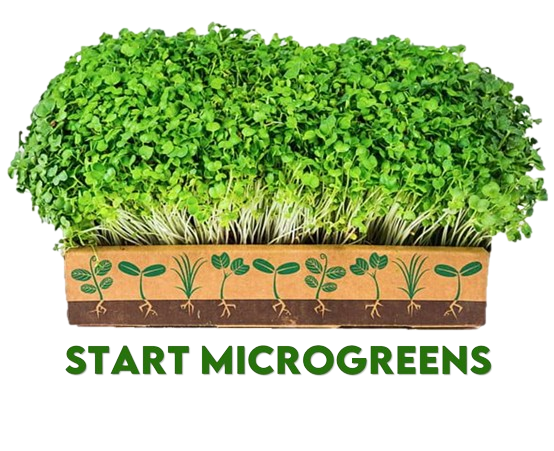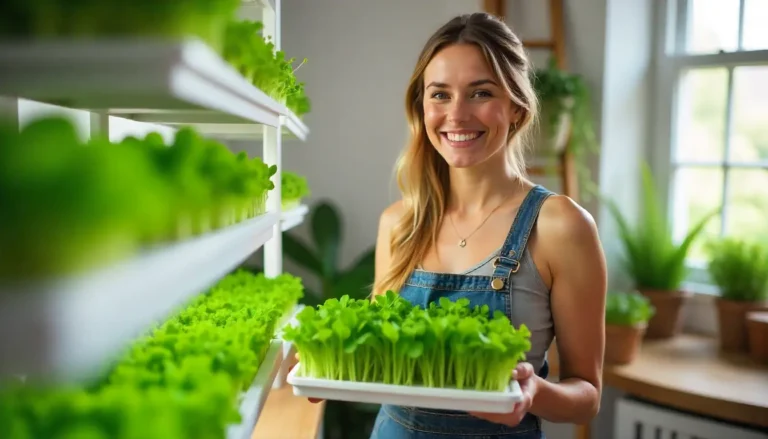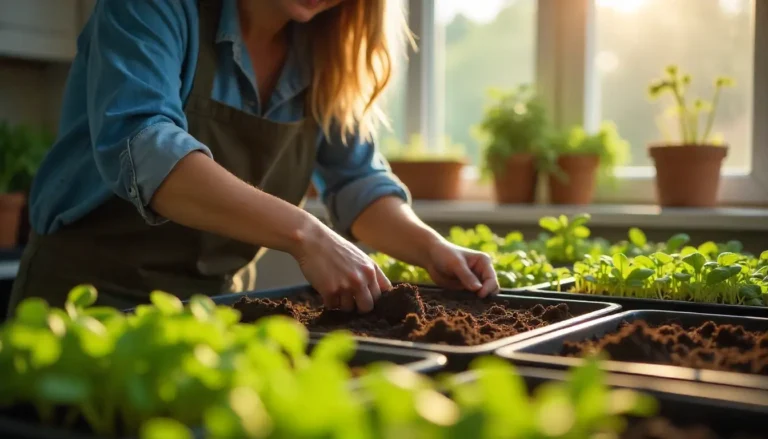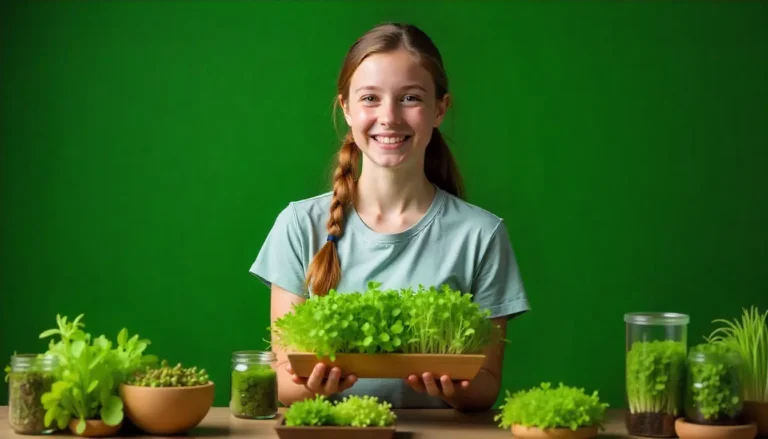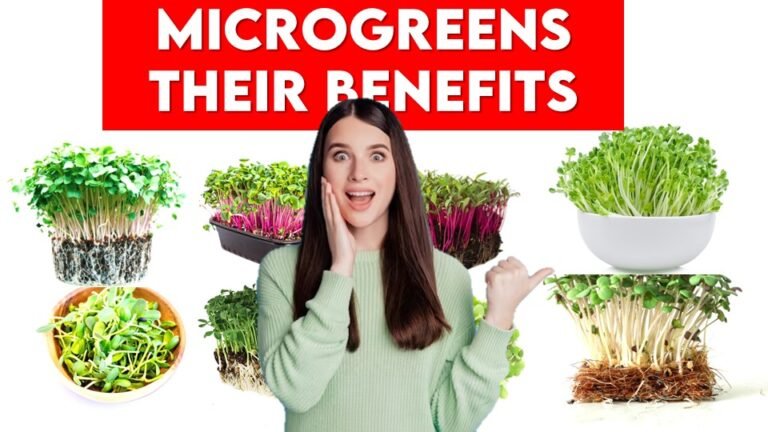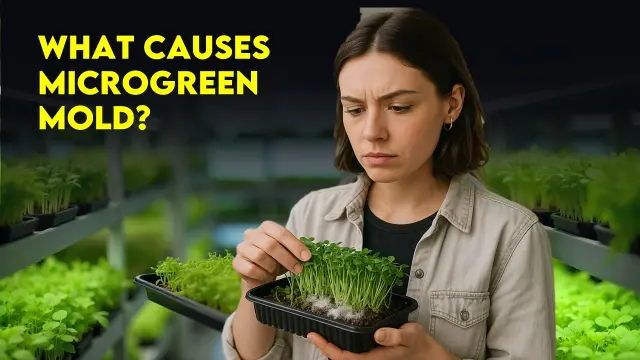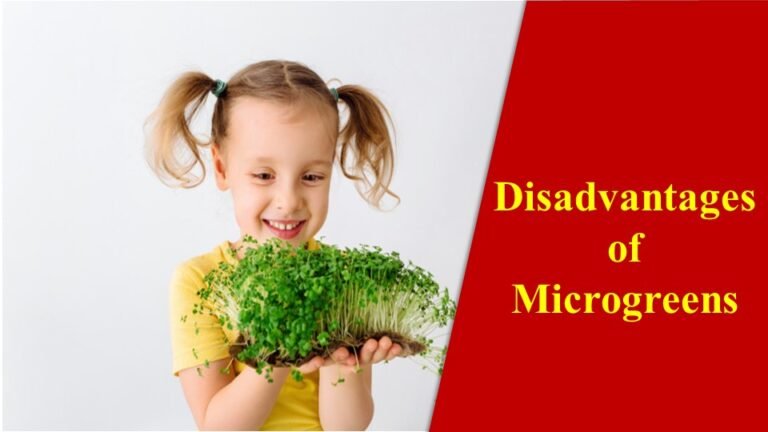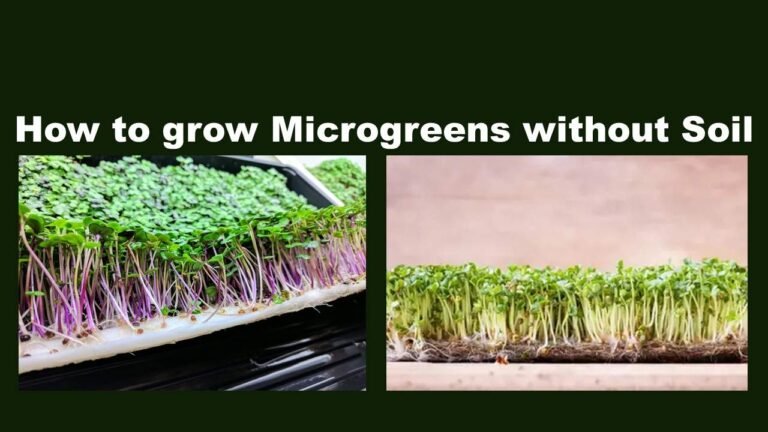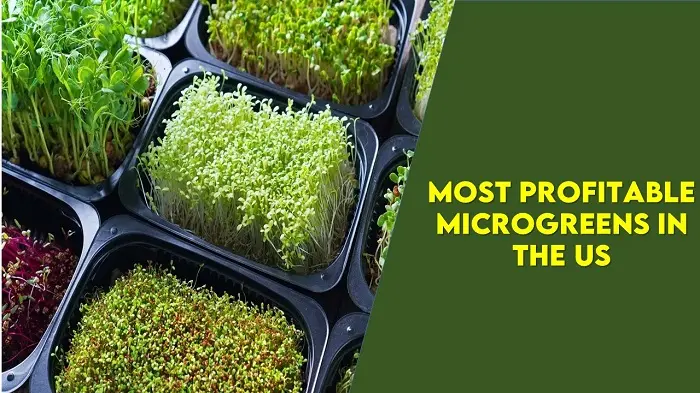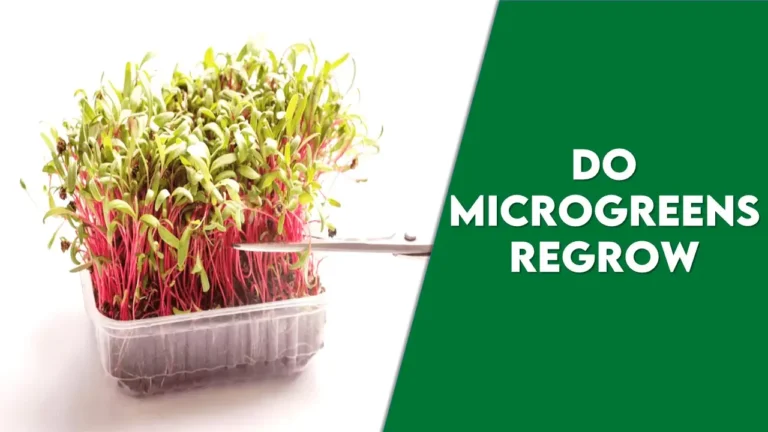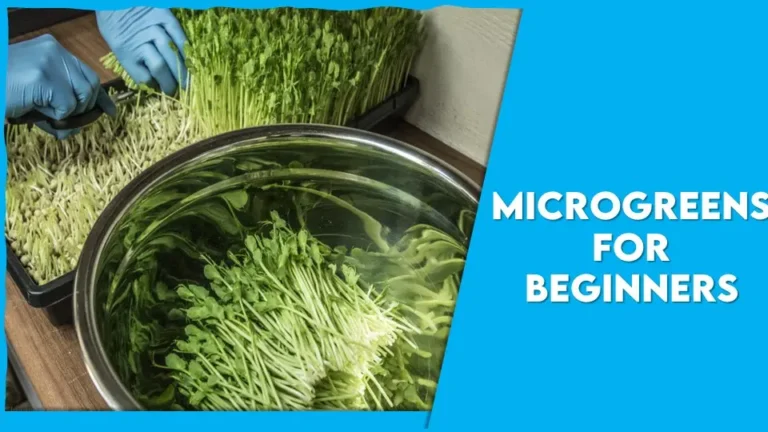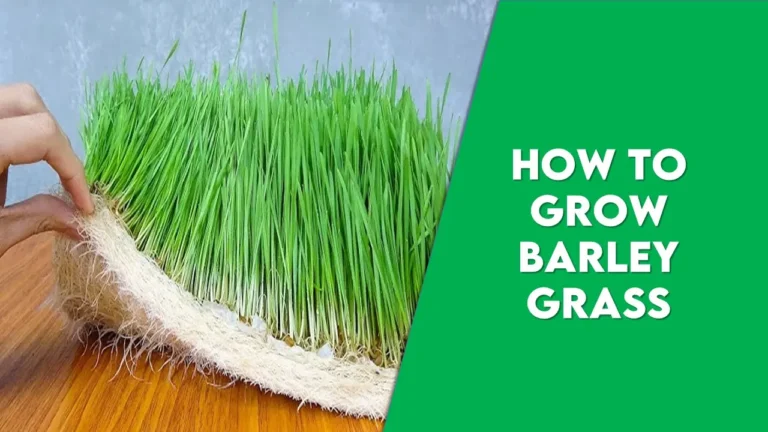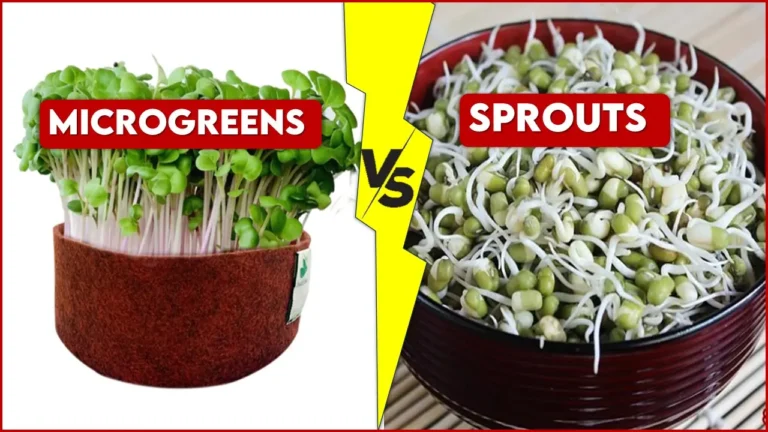Sprouts and microgreens both young and nutrient dense, they are differ greatly in terms of their growth phases,cultivation Environments, and culinary Application.microgreens, which require soil or a Growing medium and light ,are picked after real leaves have developed,whereas sprouts,which are the first stage of a plants growth ,germinate in water and are harvested soon .
Both sprouts and microgreens are made from germinated seeds.they are grown differently and reflect various phases of plant life .while sprouts are the first stage of plant’s life cycle and are usually eaten within a week of germination, microgreens are vegetables greens that are Plucked after their first genuine leaves appear.Their cultivation practices,harvest dates,and nutritional profiles are where the main distinctions may be found .
characteristics of sprouts and microgreen :
Sprouts : Young shoots known as sprouts are produced when seeds germinate.usually ,they are picked a few days after germination,before the plant reaches full maturity ,alfalfa, broccoli,lentil,moong ,radish ,beans and wheat sprouts are among the common varieties.
Characteristics :
- Nutritional value- higher vitamin and mineral content : Compared to their non-germinated cousins,sprouts are known to contain higher quantities of specific vitamins and minerals.
- Better protein quality- proteins digestibility and quality can be improved by the sproyting process.
- Decreased antinutrients – Antinutrients like as tannins and phytic acid,which can impede the absorption of nutrients,are less prevalent in sprouts.
- Enhanced nutrient bioavailability- as a complex substance are broken down during sprouting, nutrients become easier for the body to absorb.
- Packed with antioxidants- Antioxidants which can help shield the body from cell damage,are abundant in Sprouts.
What is Microgreen ?
young seedlings of edible herbs and vegetables are called microgreens.microgreens can be picked and consumed a week to ten days after the cotyledon-a portion of the embryo within the Seed – leaves have developed,in contrast to larger herbs and vegetables that take weeks or months to produce.
Microgreen Characteristics
- Size – 1-3 inches tall,small, sensitive greens.A little stem,cotyledons leave s (the earliest leaves following germination) ,and occasionally the first genuine leaves make up the appearance. High in vitamins ,minerals and healthy substances like Antioxidants is known as nutrient density.
- Flavour- Depending upon the Cultivars, flavors can range from mild and sweet to spicy or Even bitter.
- Culinary Use – Frequently used to enhance salads,garnishes,and other foods with flavor,color, and texture.
- Growth cycle – They can be grown indoors and at home because of their short Growth cycle.
- Versatility- offers a Variety of tastes and nutritional Characteristics and may be Cultivated from a broad range of seeds.
Are Sprouting seeds and microgreens seeds are same ??
A common Question is whether microgreen seeds and sprouting seeds are interchangeable. Yes ,they are ,is the response to this query ! this is the offer.
Although they both begin with the same seeds,their growth routes diverge.
Microgreens are cultivated over a longer length of time than sprouts.in just a few days, sprouting seeds will produce crisp,fresh Sprouts ,making them ideal gor Quick cultivation .microgreen seeds,on the other hand ,are cultivated over an extended period of time and grow into tiny,vibrant Plants thar are high in nutrients and flavor .
Microgreen and sprouting seeds have no biological value; They are just seeds Cultivated in a certain way.because of their inedible plant structure,some plants species-like tomatoes are not categorize as microgreens and sprouting seeds.the worst part,though is that roles are different but the seeds are to be same .
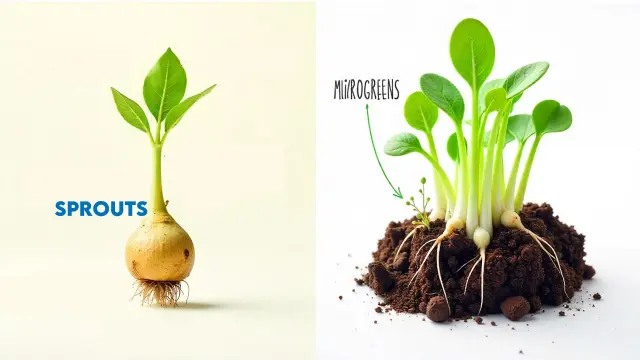
Growth stages and harvesting time :
Both Microgreen and sprouts are young edible plants,sprouts and microgreen have different growth stages and harvest dates.
Microgreen are harvested one to three weeks after sowing ,once the first genuine leaves appear,whereas sprouts are usually harvested a few days (2-7) following germination.
Sprouts :
- Germination – water – soaked seeds are stores in a moist,dark place.
- Growth – seed leaves,or cotyledons,emerge as sprouts grow roots and shoots.
- Harvest – when the roots and shoots are visible usually 2-7 days following germination, the plant is harvested.The entire sprout,including the roots,stem and seeds is considered edible .
- growing medium – usually Cultivated in water or another wet Environment, without the use of soil.
Microgreens :
- Germination of microgreens – seeds are sown in a Growing medium,such as soil or Hydroponic.
- Growth – the initial set of genuine leaves,cotyledons and roots are developed by microgreen.
- Harvest – when the first genuine leaves appear, one to three weeks following planting,the plant is harvested.The stems and leaves are the main edible portions.
- Growing medium – Soil or other growing media are usually used for Growing .
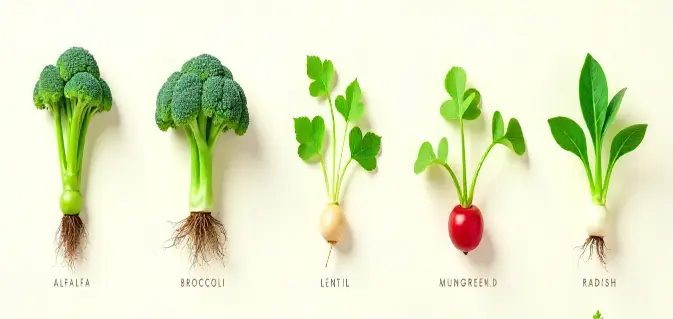
Popular varieties
Popular varieties of sprouts
The nutritional benefits and culinary Variety of sprouts have long been Praised. here are mentioned some popular Sprouts as below –
1- Alfalfa Sprouts – these are the most widely consumed sprouts.alfalfa sprouts are a popular option because of thier mildly sweet,nutty flavor and delicate crunch.they can be sprinkled on top of soups,added to salads,or layered in sandwiches.These sprouts also offer a wealth of mineral and other health Advantages including high quantities of Vitamim C and potassium K .
2- Broccoli sprouts – packed with the Antioxidants sulforaphane,which has been connected to a host of health advantages,brocolli Sprouts are another favorite among health afficionados.though they have a peppery flavor,these little green taste comparable to mature broccoli. They are a great garnish for a Variety of foods or a great addition to smoothies and salads.
3- lentil sprouts- it is a popular kind of sprout because of their crunchy texture and mild earthy flavor,they are great addition to many international recipes because they are also quite nutrient- dense,offering fiber,protein,manganese and folate.
4- Mung bean Sprouts – These sprouts are still a favorite around the world because of their mild flavor and crunchy texture.mung bean Sprouts are a Great source of protein, fiber and vitamin K .
5- Radish Sprouts – Radish Sprouts are prized for their nutritional richness and spicy kick.they are also a great source of potassium,Iron,calcium and vitamins A,B1,B6 ,C and Vitamin E.
Popular varieties of microgreens :
You will find a multitude of tasty and nourishing options as you go deeper into the realm of microgreens.
1- Sunflower microgreens- these are one of the most popular kind.these tiny shoots are perfect for salads .They are abundant in calcium,iron ,magnesium, potassium ,phosphorus and important minerals such vitamin A,B complex, D and E.
2- Mustard microgreens- They are great option for foodies who are concerned about their health . they are rich in magnesium, as well as vitamins A,C and K ,these little leafy greens gives a lot of recipes.
3- Pea microgreens – Pea microgreens are a great choice if you want something sweet with a crisp texture.they are Rich in vitamins C and A .
4- Radish microgreens- they give any dish a spicy boost.rich source of Vitamins C,K,E ,B6,calcium,potassium, iron,zinc,manganese are among Many nutrients they contain.
5- Brocolli microgreens- these are not to overcooked.provides up to 40 times more health promoting elements than mature brocolli and go well with any meal.
Culinary uses of Sprouts and microgreens
Chefs have learned the Advantages of using sprouts and microgreens into their recipes.They enhance the plates nutritious content in addition to adding vivid colours and crunchy textures.these little plants adaptable and can be used in a wide range of dishes,from straightforward salads to intricate main Entress.
any recipe cam benefit from their many flavors, which range from sweet to spicy.Microgreens are great as salad,sandwich and soup garnishes because of their tiny stem and soft leaves.for instance ,radish microgreens give a burst of heat that goes nicely with Avacado toast or creamy soups.
They also add a Welcome crunch and taste boost to safefood dishes like tuna tartare or salmon.microgreens are not only aesthetically pleasing but also a Nutrient dense addition to any meal because they are a great source of vitamins and Antioxidants.
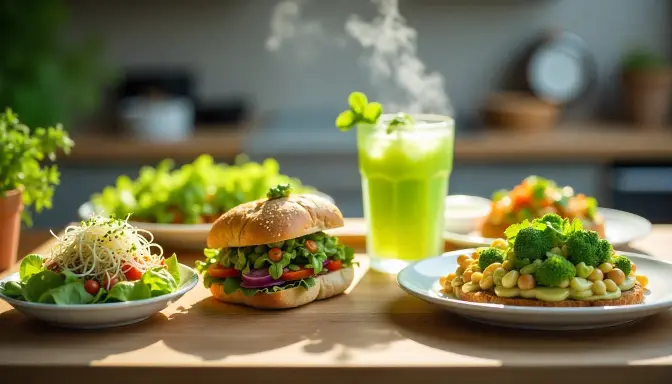
Harvesting and storage
- Harvesting microgreens and sprouts – Microgreens are simple to harvest,all you need is a sharp knife or a pair of clean scissors.it is advised to cut the stems just above the soil line to enhance the look of your Plants and lower the possibility of soil contamination.
conversly,sprouts can be harvested three to five days after germination and are Frequently produced in water Without Soil. Sprouts are eaten entire,including the germinated seeds,roots ,stems,and immature leaves ,in contrast to microgreens .before eatingg or storing them,its crucial to give them a good rinse in clean water to get rid of any possible hulls that were left behind during germination .Harvesting microgreens and sprouts at the right time is essential. While waiting too long can result in rougher textures and less enticing flavours ,harvesting them too early can result in weaker flavours and less nutrients.For best freshness,both should be picked right before consumption because ,once sliced or rinsed ,their nutritious value starts to Deteriorates. In order to minimize heat stress on the plants,harvesting should ideally occur in cool weather ,such as early morning or late evening .post harvest treatment has big influence on shelf life ,therefore Its also crucial to avoid any needless contact With water until right before usage.
Storing of Microgreens and sprouts
Its crucial to consider the living Nature and delicate structure of.microgreens and sprouts When keeping them.their nutritional content and freshness can be maintained with proper preservation. To stop mold growth and breakdown,its important to keep humidity and airflow in balance.once.microgreens are harvested,keep them in the refrigator between 39 and 41 degrees Rahe ek (4-5 °C) in a breathable container ,such as a salad box lined With paper towels or a plastic container with tiny ventilation holes.
Because of their mature plant structure, sprouts have a longer shelf life.remove any seed covering s or hulls that can Deteriorates over time after harvesting.sprouts should be kept in ventilated containers with adequate humidity and little moisture retention.avoid packing containers too full and check stored green frequently for signs of deterioration to gurantee optimal freshness.you can always eat fresh,nutrient dense greens if you follow these handling and sotrage guidelines.
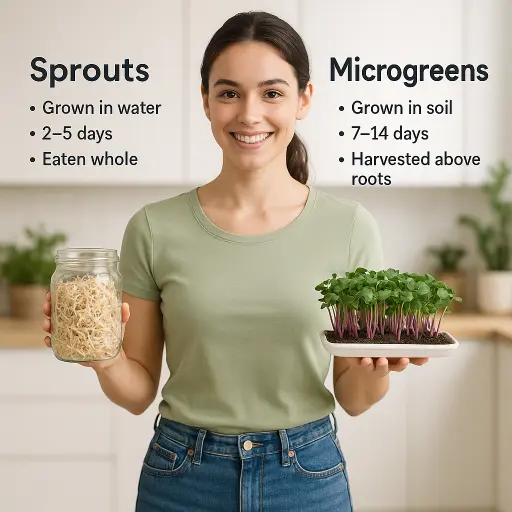
Conclusion :
Although Microgreens and sprouts are both immature ,Nutrient – rich plants,their advantages vary based on your needs.while microgreens require a bit more effort but offer a concentrated punch of nutrients- ,powerfull flavor ,and brilliant color,sprouts are quick, easy to grow and perfect for improving digestion and enzymes.adding either ( or both !) To your diet is a novel step toward improved health ,regardless of your preference for simplicity or a gourmet touch.
